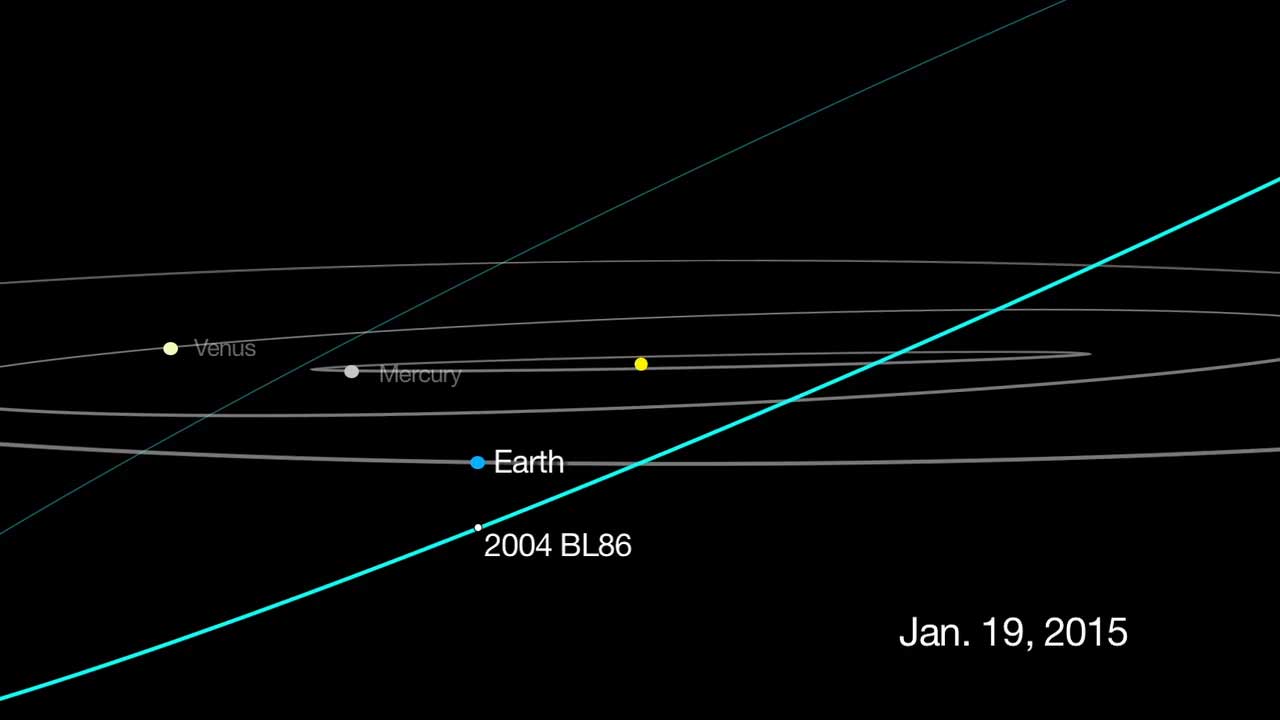
It doesn’t sound like a close shave, but in astronomical terms, it is.
An asteroid will fly within 745,000 miles of Earth on Monday, NASA said, the closest a space rock will fly to Earth until 2027. It won’t be a danger to the planet, but it’s not every day that an asteroid passes by us at just three times the distance from the Earth to the moon.
While the asteroid “poses no threat to Earth for the foreseeable future,” said Don Yeomans, manager of NASA’s Near Earth Object Program, “it’s a relatively close approach by a relatively large asteroid, so it provides us a unique opportunity to observe and learn more.”
The asteroid, labeled 2004 BL86, is about a third-of-a-mile in size, based on its brightness. Scientists will use microwaves to study the asteroid.
There’s a reason to be enthusiastic, said Yeomans, who is retiring from his position.
“Asteroids are something special,” Yeomans said. “Not only did asteroids provide Earth with the building blocks of life and much of its water, but in the future, they will become valuable resources for mineral ores and other vital natural resources. They will also become the fueling stops for humanity as we continue to explore our solar system. There is something about asteroids that makes me want to look up.”
More Must-Reads From TIME
- The 100 Most Influential People of 2024
- The Revolution of Yulia Navalnaya
- 6 Compliments That Land Every Time
- What's the Deal With the Bitcoin Halving?
- If You're Dating Right Now , You're Brave: Column
- The AI That Could Heal a Divided Internet
- Fallout Is a Brilliant Model for the Future of Video Game Adaptations
- Want Weekly Recs on What to Watch, Read, and More? Sign Up for Worth Your Time
Contact us at letters@time.com